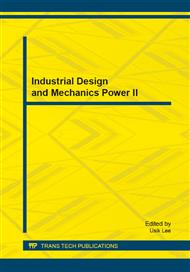p.1057
p.1062
p.1066
p.1073
p.1077
p.1081
p.1085
p.1089
p.1093
Thermoelectric Physical Model with Thomson Effect and Experiment Comparison
Abstract:
Output performance prediction of thermoelectric generators (TEG) is a valuable work for TEG structure optimization (i.e. shape of thermocouple and other electrical or thermal conducting components) and material selection. Considering the basic thermoelectric effects, as well as the thermal resistances between the thermocouple and the heat source, heat sink, this paper describe a physical model with Thomson effect for a simplified thermoelectric module. A new method to solve the temperature of the thermocouple hot and cold conjunctions which directly affect the voltage, current and output power, is proposed. And an experiment test of a commercial Bi2Te3 thermoelectric module is undertaken to testify the physical model and the solution method. The study shows that the calculation results are in good accordance with the experiment data, which prove the accuracy of the physical model and the solution method. This paper can provide a novel analytical method for TEG performance prediction.
Info:
Periodical:
Pages:
1077-1080
Citation:
Online since:
October 2013
Authors:
Price:
Сopyright:
© 2013 Trans Tech Publications Ltd. All Rights Reserved
Share:
Citation:


